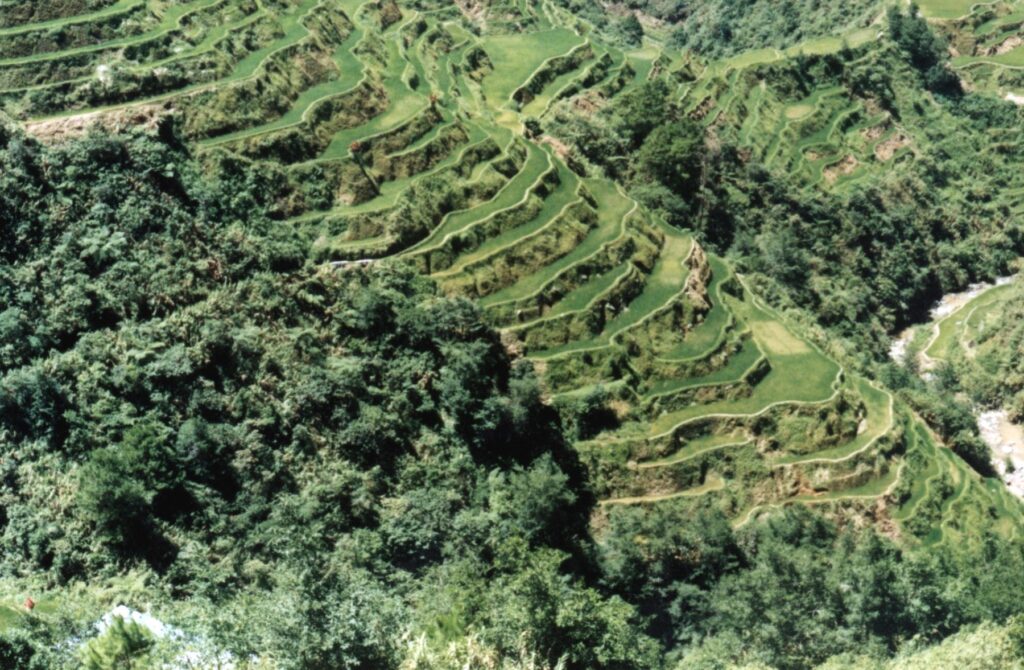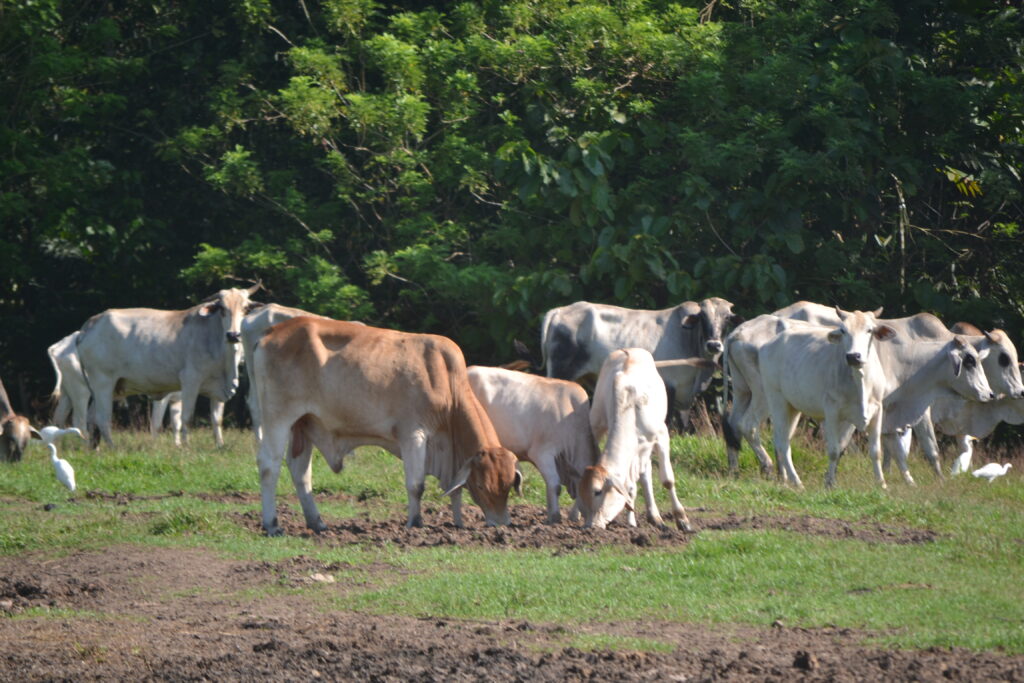Right now, water crisis as a world issue may not be as big as climate change, but it may soon be along with it as the world faces food insecurity because of it.
“The world is running out of clean, fresh water to feed – and nourish – a growing global population, ensure sustainable development, and maintain the health of our planet,” said Mark Rosegrant, a research fellow emeritus with the director’s general office of the International Food Policy Research Institute (IFPRI).
“There is not enough water – as currently managed – to adequately sustain the world’s population and end hunger and malnutrition,” wrote Rosegrant in a position paper which this author obtained.

Water is one of the three important factors in food production, the other two being soil and sunlight. “Our problem in the Philippines is our inability to manage our water resources and even protect the watersheds where the water comes from,” said Emmanuel Piñol at the time when he was the agriculture secretary.
Piñol cited two kinds of water problems most Filipino farmers face: “During the rainy season, we suffer from floods but during the summer months, the farms, especially in Central and Northern Luzon, are parched dry and virtually useless.”
The trouble is: “While lowland paddy rice is a water-hungry plant, its ability to produce more is reduced during the cloudy rainy months when water is available everywhere because it needs sunlight for efficient photosynthesis.”
That brings to another water problem. “The best time to plant rice,” Piñol said, “is during the summer months when the sunlight is abundant thus increasing the yield but this is also the period when water is scarce and even unavailable.”
Current rice production systems consume a high amount of water. It takes about 3,000 liters of water to produce one kilogram of rice, reports the Laguna-based International Rice Research Institute (IRRI).
“The link between water and food is strong,” admits Lester Brown, president of the Washington, D.C.-based Earth Policy Institute. “We drink, in one form or another, nearly four liters of water per day. But the food we consume each day requires at least 2,000 liters to produce, 500 times as much.”
In his book, Food Revolution, author John Robbins said that 23 gallons of water is needed to produce one pound (0.454 kilogram) of lettuce, 23 gallons for one pound of tomatoes, 24 gallons for one pound of potatoes, 25 gallons for one pound of wheat, 33 gallons for one pound of carrots, and 49 gallons for one pound of apples.

Meat production also consumes a lot of water. “Agriculture uses about 70% of the world’s available freshwater, and one-third of that is used to grow the grain fed to livestock,” points out the Worldwatch Institute.
Beef, the meat used in most fast food outlets, is by far the most water-intensive of all meats. “The more than 15,000 liters of water used per kilogram is far more than is required by a number of staple foods, such as eggs (3,300 liters per kilogram), milk (1,000 liters), or potatoes (255 liters),” the institute reports.
The US Department of Commerce 1992 Census of Agriculture’s Farm and Ranch Irrigation Survey, published in 1994, reported that one pound of pork needs at least 1,630 gallons of water to produce but in contrast one pound of beef requires 5,214 gallons of water.
“Producing beef is much more resource-intensive than producing pork or chicken, requiring roughly three to five times as much land to generate the same amount of protein,” the Worldwatch Institute says. “Beef production alone uses about three fifths of global farmland but yields less than five percent of the world’s protein.”
The Philippines is already experiencing water shortage and it will be more apparent in the coming years. As the population continues to grow, it needs more land to be used for food production and more water to grow crops and raise livestock.
Some studies have shown that agriculture has the highest demand of all water use with 85% while the other sectors – industry and domestic – have a combined demand of only 15%.
“With the demand for water growing in all three categories, competition among sectors is intensifying, with agriculture almost always losing,” Brown says. “Agriculture is by far the biggest consumer of water worldwide,” IRRI adds.
To contribute decisively to ending hunger, water management, policies and investment must overcome daunting challenges, Rosegrant stated. These include rising global population, incomes and urbanization.
“The global population is projected to reach 9.8 billion by 2050,” the IFPRI official said. “Rising incomes and urbanization will increase demand for meat and more nutritious diets – and therefore more water for livestock feed, and the need for more precise water management for fruits and vegetables.”
As for rapid urbanization, this will also “boosts water demand for household and industry, creating competition with irrigation in important water-scarce agricultural regions,” Rosegrant noted. “That competition,” he added, “can turn into outright conflict, disrupting local livelihoods and triggering migration and transborder disputes.”
Then, there’s the problem of climate change, which is caused by the surge of greenhouse gases like carbon dioxide in the atmosphere. “Climate impacts across the entire water cycle could substantially slow progress on water management, agricultural production, and food and nutrition,” Rosegrant said.
Sandra Postel, director of the Massachusetts-based Global Water Policy Project, believes water crisis will be alongside with climate change as a threat to the human future.
“Although the two are related, water has no substitutes,” she explains. “We can transition away from coal and oil to solar, wind and other renewable energy sources. But there is no transitioning away from water to something else.”
Another issue is water pollution in both agricultural and non-agricultural sectors. “Water pollution damages health and nutrition and reduces food production, constraining agricultural and economic development, especially in densely populated regions where water is already scarce and wastewater treatment is poor,” Rosegrant said.
“Immense” is how Rosegrant considered these global water security challenges. “But they can be overcome,” he said. “If this vital resource is properly managed, it will be possible to meet both the food and water needs of current generations and begin building a sustainable, nourishing food system for the future.”
Water, not oil, is the most precious asset on Earth, according to Postel. Water covers over 70% of the earth’s surface and is a major force in controlling the climate by storing vast quantities of heat. About 97.5% of all water is found in the ocean and only the remaining 2.5% is considered fresh water. Unfortunately, 99.7% of that fresh water is unavailable, trapped in glaciers, ice sheets, and mountainous areas.
Water is drawn in two fundamental ways: from wells, tapping underground sources of water called aquifers; or from surface flows – that is, from lakes, rivers, and man-made reservoirs.
In the 1950s, the Philippines had as much as 9,600 cubic meters of clean water per person, according to Dr. Rafael D. Guerrero, an academician at the National Academy of Science and Technology. Four decades later, Filipinos must make do with little more than a third for that volume – 3,300 cubic meters per capita.
Today, the Philippines ranks second from the lowest among Southeast Asian countries in terms of per capita water availability per year with only 1,907 cubic meters. Thailand is at the bottom, with 1,854 cubic meters. Vietnamese have more than twice what Filipinos get: 4,591 cubic meters.
But there’s still good news. “The Philippines is still blessed with enough water resources, as our rainfall is 2,400 millimeters (mm) per year, or three times that of India’s 700 mm,” wrote Dr. William Dar in his Manila Times column. “However, India exports more farm products than the Philippines.”
Donald Hinrichsen, an award-winning American book author, considered water crisis as “one of the most pressing environment and development problems facing humanity.”
“It may very well end up being one of the main issues confronting humanity as we proceed further into the 21st century,” Hinrichsen pointed out bluntly. “We are already robbing Peter to pay Paul, as it were – taking water away from one set of users and give to another set.”
The International Water Management Institute contends that growing food with less water by improving productive of water used in agriculture is the key to solving the looming global threat.
“None of these measures will work alone,” Hinrichsen thinks. “Which is why we need a revolution in thinking about water and how it should be used. And that calls for a comprehensive management plan.”
In his position paper, Rosegrant presented some “broad strategies” so that the world can “move toward greater food and nutrition security.” Among those that can be applied in the Philippines are the following:
Water rights: “This means ensuring recognition of existing formal and informal rights and gender equity, to empower farmers and provide a framework for water management that is more effective and equitable.”
Incentives encouraging efficient water use: “These include water brokering to water user association; paying farmers for reduced water use; and payment for environmental services to integrated soil and water management or upper watershed management that improves downstream water quality.”
Reducing high subsidies for water, energy, and fertilizer use: “Cutting them can encourage the adoption of conservation incentives and practices as well as the uptake of new technologies.”
Reform education and extension systems: “These should be overhauled to increase gender-sensitive farmer knowledge, disseminate information, and improve adoption of appropriate existing and new water technologies.”
Expand small-scale irrigation: “Although some potential still exists for large-scale irrigation, the emphasis should be on selective investment in farmer-led small-scale irrigation.”
Reduce international trade and macroeconomic distortions: “Addressing this problem will become more urgent as climate change increases the reliance of many developing countries on food imports.”
Promote balanced diets for health and sustainability: “This should include encouraging more responsible water use through collective action across government and business.”
“These policy reforms and investments will be difficult to implement and take time, political commitment and money,” Rosegrant said, adding that “the time to act on fundamental reform of water policies for food and nutrition security is now.”
Text and Photos by Henrylito D. Tacio

